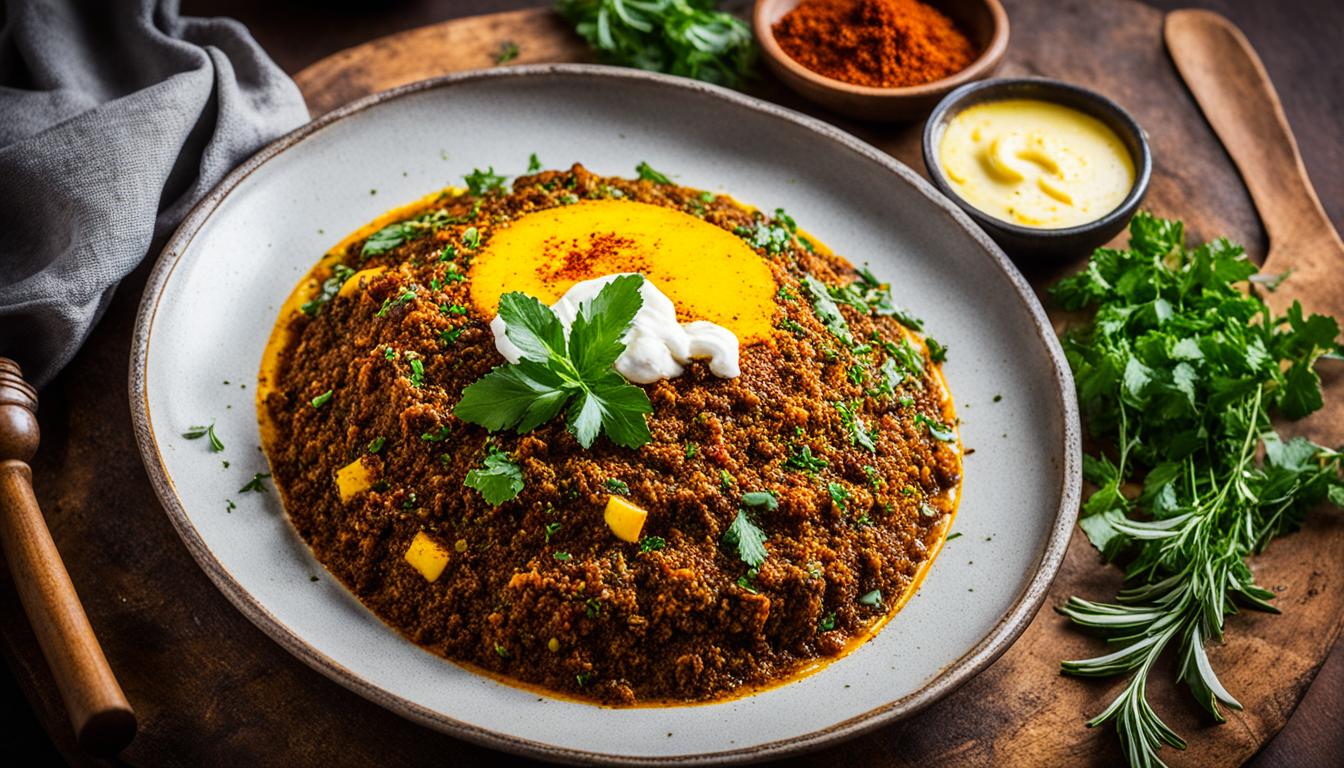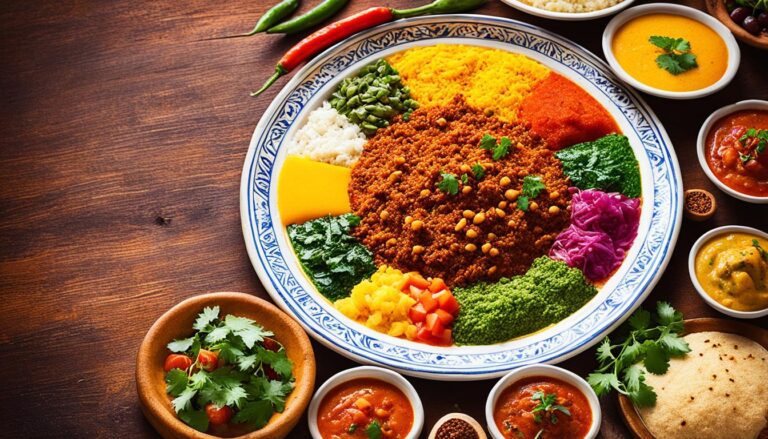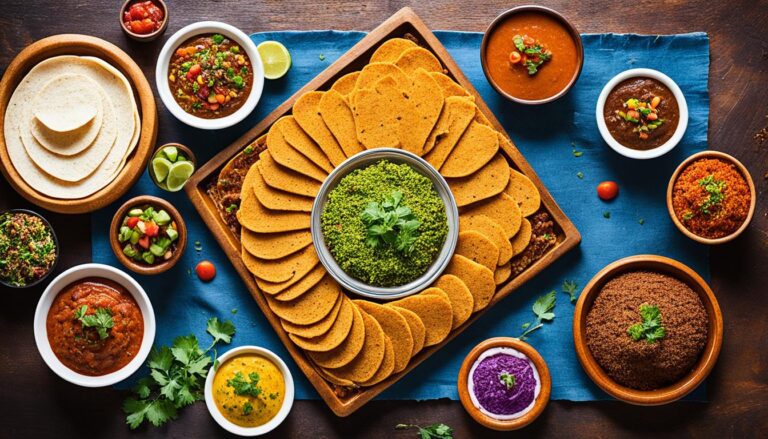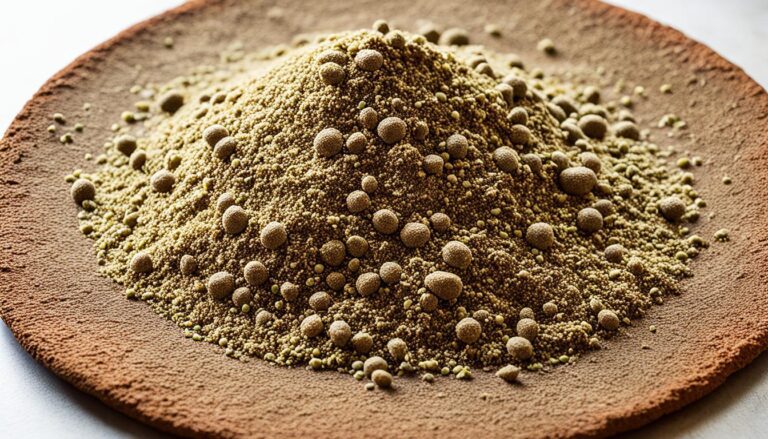Does Ethiopian Food Use Butter?
Welcome to our exploration of Ethiopian cuisine! Today, we embark on a flavorful journey to uncover the secrets of this vibrant culinary tradition. But before we dive in, we want to challenge a common perception: Does Ethiopian food use butter? Perhaps you’ve always associated Ethiopian cuisine with spicy stews and injera, but is butter an essential ingredient in these dishes? Join us as we delve into the world of Ethiopian cooking and discover the truth behind its tantalizing flavors.
Key Takeaways:
- Traditionally, Ethiopian cuisine does incorporate butter, specifically a clarified butter called “niter kibbeh,” which adds richness and depth to dishes.
- However, Ethiopian food also offers a variety of vegan and dairy-free options for those with dietary preferences or restrictions.
- Butter usage in Ethiopian cuisine may vary in Ethiopian restaurants outside of Ethiopia due to regional tastes and adaptations to cater to diverse palates.
- When consumed in moderation, butter in Ethiopian food can be part of a balanced and nutritious diet.
- Exploring the unique flavors of Ethiopian cuisine is a must for food enthusiasts looking to expand their culinary horizons.
A Taste of Ethiopia: Diversity and Flavor
Before delving into the use of butter in Ethiopian cuisine, let us first take a moment to explore the captivating world of Ethiopian flavors. With its rich culinary heritage and diverse ingredients, Ethiopian cuisine offers a taste experience like no other.
From aromatic spices to bold and vibrant ingredients, Ethiopian dishes are renowned for their unique combination of flavors. Each bite is a journey, an explosion of taste that reflects the country’s rich cultural history.
Traditional Ethiopian dishes are a testament to the country’s culinary prowess. From the iconic injera, a sourdough flatbread that serves as the staple of Ethiopian meals, to the hearty and flavorful Doro Wat, a mouthwatering chicken stew with berbere spice, every dish tells a story and carries the essence of Ethiopia’s culinary traditions.
The Ethiopian Experience: An Array of Flavors
One cannot fully appreciate the beauty of Ethiopian cuisine without savoring the diverse flavors it has to offer. The cuisine draws from a range of ingredients, including fragrant spices like cumin, coriander, and cardamom, as well as rich legumes like lentils and chickpeas.
With a blend of herbs such as basil and thyme, Ethiopian dishes create a symphony of flavors that tantalize the taste buds. The delicate balance between spice, acidity, and sweetness adds depth and complexity to every bite.
Whether you’re indulging in the robust flavors of Kitfo, a spiced minced beef dish, or savoring the delicate flavors of Atakilt Wat, a fragrant vegetable stew, every dish is a unique experience that showcases the diversity and creativity of Ethiopian cuisine.
Join us as we explore the fascinating world of Ethiopian cooking, where traditional dishes and diverse flavors come together to create a culinary adventure like no other.
Key Ingredients in Ethiopian Cooking
In Ethiopian cuisine, the use of Ethiopian spices, along with other unique ingredients, plays a significant role in creating the distinctive flavors that make this culinary tradition so enticing. From fragrant spices to flavorful grains, legumes, and vegetables, these foundational components are the pillars of traditional Ethiopian cooking.
One of the most notable aspects of Ethiopian cuisine is the wide array of spices utilized in various dishes. These Ethiopian spices not only add depth and complexity to the flavors but also contribute to the vibrant colors that make the food visually appealing. Commonly used spices include berbere, a hot chili powder blend, and nigella seeds, also known as black cumin.
Grains and legumes are essential ingredients in Ethiopian cooking, providing nourishment and texture to many dishes. Injera, a spongy and tangy Ethiopian bread made from fermented teff flour, is a staple accompaniment to most meals. Lentils, chickpeas, and split peas are also frequently incorporated, offering a rich source of plant-based protein.
Vegetables play a crucial role in Ethiopian cuisine, both in terms of taste and presentation. Collard greens, carrots, cabbage, and onions are among the commonly used vegetables, adding a delightful crunch and contributing to the overall balance of flavors in the dishes.
To give you a visual glimpse of some of these unique ingredients, take a look at the image below:

In the next section, we will explore the role of butter in Ethiopian cooking, specifically focusing on the traditional butter known as “niter kibbeh” and its significance in Ethiopian culinary traditions.
Buttery Delights: Exploring the Role of Butter
In Ethiopian cuisine, butter plays a significant role in creating the distinctive flavors and textures that make the dishes so beloved. One particular type of butter used in Ethiopian cooking is known as niter kibbeh. This traditional butter is infused with a rich blend of spices, giving it a unique aroma and taste.
The process of preparing niter kibbeh involves simmering butter with a variety of aromatic spices such as garlic, ginger, cardamom, cinnamon, and fenugreek. These spices infuse the butter with their flavors, resulting in a fragrant and flavorful ingredient that elevates the taste of Ethiopian dishes.
Niter kibbeh is commonly used as both a cooking fat and a seasoning in Ethiopian cuisine. Its rich and complex flavors add depth to stews, sauces, and sautéed vegetables. It enhances the taste of traditional dishes like Doro Wat, a spicy chicken stew, and Tibs, a sizzling meat dish.
Moreover, niter kibbeh is an integral part of Ethiopian culinary traditions. Its use reflects the country’s long history and cultural heritage. Passed down through generations, the preparation of niter kibbeh is a time-honored practice that ensures the flavors remain authentic and true to Ethiopian cooking methods.
With its distinct taste and importance in Ethiopian cuisine, it’s no wonder that niter kibbeh brings a unique and delightful experience to the table. So, the next time you savor Ethiopian food, take a moment to appreciate the buttery delights that contribute to its rich and flavorful character.
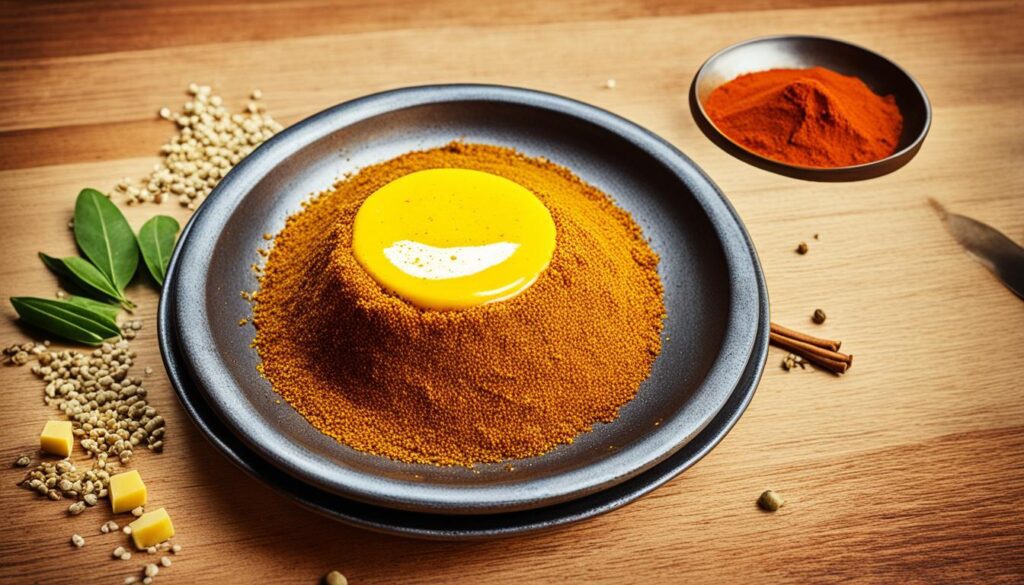
Vegan and Dairy-Free Options in Ethiopian Cuisine
In Ethiopian cuisine, there is a wide range of delightful options for vegans and those avoiding dairy. Ethiopian food celebrates the richness of plant-based ingredients, offering a variety of delicious vegan dishes that satisfy both the taste buds and dietary preferences.
One popular vegan dish in Ethiopian cuisine is “Misir Wot,” a flavorful lentil stew cooked with aromatic spices such as berbere. This dish is typically served with injera, a sourdough flatbread made from fermented teff flour.
Another vegan staple is “Shiro,” a thick stew made from ground legumes, vegetables, and spices. It is commonly enjoyed with injera or rice and provides a hearty and satisfying meal option.
For those seeking dairy-free alternatives to butter, Ethiopian cuisine offers a solution. While butter, specifically niter kibbeh, is traditionally used in many Ethiopian dishes, it can be substituted with vegetable oil or ghee for those with dairy intolerance or preference for plant-based options.
The use of dairy-free alternatives ensures that individuals can still enjoy the rich flavors and textures of Ethiopian cuisine without compromising their dietary choices. These alternatives not only cater to vegans and those following a dairy-free diet but also provide an opportunity for everyone to explore the diverse and mouthwatering world of Ethiopian food.
Ethiopian Food Abroad: Adaptations and Variations
When it comes to Ethiopian cuisine, its popularity extends far beyond the borders of Ethiopia. As flavorsome and unique as it is, Ethiopian food has found its way into many countries around the world, captivating the taste buds of people from diverse backgrounds.
But how does Ethiopian cuisine adapt and change in restaurants abroad? Specifically, let’s explore the use of butter in Ethiopian restaurants outside of Ethiopia.
While butter plays a significant role in traditional Ethiopian cooking, its usage may vary when it comes to Ethiopian restaurants outside the country. Regional tastes and dietary preferences can influence the adaptations and variations observed in these establishments.
Some Ethiopian restaurants abroad adhere closely to authentic Ethiopian recipes, maintaining the traditional use of butter in their dishes. This dedication to preserving the true essence of Ethiopian cuisine allows diners to experience the rich flavors and textures that butter brings to the table.
On the other hand, you may also find Ethiopian restaurants that offer alternative options to cater to specific dietary needs or cultural preferences. In these cases, butter usage might be reduced or substituted with dairy-free alternatives like vegetable oils or plant-based spreads.
Despite these adaptations and variations, many Ethiopian restaurants abroad remain committed to providing an authentic culinary experience, ensuring that the heart and soul of Ethiopian cuisine are not lost.
Exploring the Health Benefits and Considerations
In addition to its delightful flavors and diverse culinary traditions, Ethiopian cuisine offers numerous health benefits. The use of fresh ingredients, vibrant spices, and traditional cooking techniques contribute to the nutritional value of the dishes. However, when it comes to butter consumption, moderation is key.
Ethiopian dishes are often packed with nutrient-rich ingredients such as lentils, chickpeas, collard greens, and an array of aromatic spices. These ingredients provide essential vitamins, minerals, and antioxidants that support overall well-being and immune function.
One aspect to consider is the use of butter, specifically “niter kibbeh,” in Ethiopian cooking. While butter adds richness and depth of flavor to many dishes, it is important to consume it in moderation due to its high saturated fat content. Saturated fats, when consumed in excess, can contribute to cardiovascular issues if not balanced with a healthy lifestyle.
Butter in Moderation: Finding Balance
Enjoying Ethiopian cuisine can still be part of a healthy diet by practicing moderation in butter consumption. On occasion, savoring dishes that contain butter can be a delightful indulgence. However, it is advisable to incorporate other cooking methods that utilize healthier fats, such as olive oil or avocado oil, for everyday meals.
Adding a variety of vegetables, incorporating whole grains, and choosing lean protein sources can further enhance the nutritional profile of Ethiopian meals. These dietary choices contribute to balanced nutrition, providing essential nutrients while reducing the potential negative impact of excessive butter consumption.
Furthermore, exploring the vegan and dairy-free options in Ethiopian cuisine can offer delicious alternatives for those seeking to avoid butter or adhere to specific dietary preferences. Traditional vegan dishes such as lentil stews, vegetable curries, and injera bread provide a wide range of flavors, textures, and nutritional benefits without relying on butter.
By being mindful of butter consumption and balancing it with other healthy choices, you can fully enjoy the tantalizing flavors and health benefits that Ethiopian cuisine has to offer.
Conclusion
In conclusion, our exploration of the use of butter in Ethiopian food has revealed the fascinating role it plays in creating the distinct flavors and textures of traditional Ethiopian dishes. Ethiopian cuisine is renowned for its diverse and flavorful offerings, and butter is a key ingredient that contributes to this reputation.
Throughout our journey, we have discovered that Ethiopian cooking relies on a variety of unique ingredients, including spices, grains, legumes, and vegetables. These ingredients work in harmony with the butter to produce rich and complex flavors that are characteristic of Ethiopian cuisine.
Furthermore, we have seen that Ethiopian food is adaptable to different dietary preferences. Whether you are a vegan or avoiding dairy, there are delightful options available that showcase the culinary creativity of Ethiopian chefs. By substituting butter with dairy-free alternatives, you can still savor the essence of Ethiopian cuisine.
As Ethiopian food gains popularity around the world, it is interesting to note that adaptations and variations occur in Ethiopian restaurants outside of Ethiopia. While the use of butter remains consistent, the flavors and techniques may be adjusted to suit regional tastes and dietary preferences. This highlights the versatility and adaptability of Ethiopian cuisine.

